Spotting tiny red bugs crawling across your walls and window sills can be alarming. If these little creatures leave red stains when crushed, you’re likely dealing with clover mites in house infestations. Working in the DC metro area for decades, I’ve seen these seasonal invasions spike during specific windows in spring and fall.
These microscopic plant-feeders aren’t dangerous, but they can become a major nuisance when they invade homes in large numbers. Understanding how to identify, remove, and prevent clover mites will help you regain control of your living space.
What Are Clover Mites in House? Identification and Key Traits
Clover mites (Bryobia praetiosa) are tiny arachnids that belong to the spider family, not insects. These plant-feeding mites measure only 0.75 mm (roughly 1/30th of an inch). That makes them smaller than a pinhead and barely visible to the naked eye.
Adult clover mites appear reddish-brown to olive colored, while newly-emerged larvae show up bright red. According to Ohio State University Extension, their front pair of legs extends twice as long as the others and points forward like antennae.
The easiest way to confirm clover mites in house situations involves the crush test. When squashed, their body pigments leave distinctive rusty-red smears on walls, fabrics, and paper. One homeowner I worked with described them as creating “a bit of a red mess” when stepped on.
Additionally, clover mites differ significantly from chiggers, which customers often confuse them with in our area. Chiggers bite humans, while clover mites only feed on plants outdoors.
How Long Do Clover Mites Live: Life Cycle and Seasonal Invasions
Understanding when clover mites become active helps predict clover mites in house invasions. These cool-season pests thrive at temperatures around 69 degrees Fahrenheit and complete their development in about one month during spring conditions.

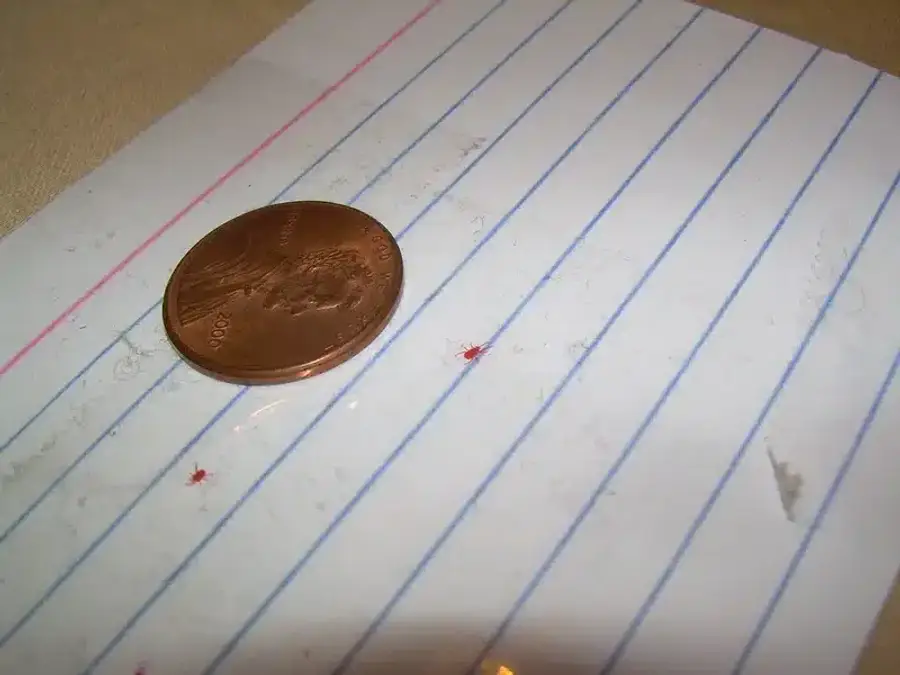

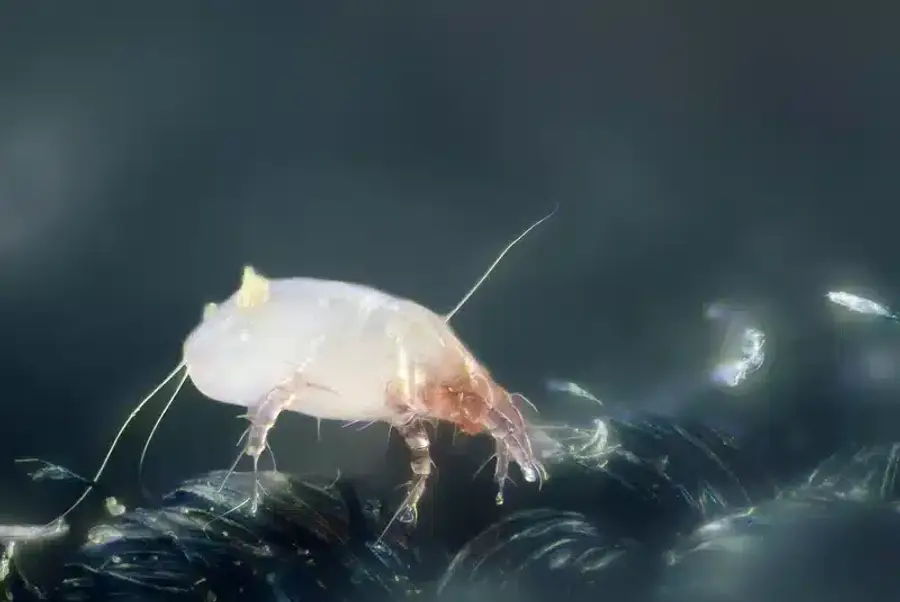
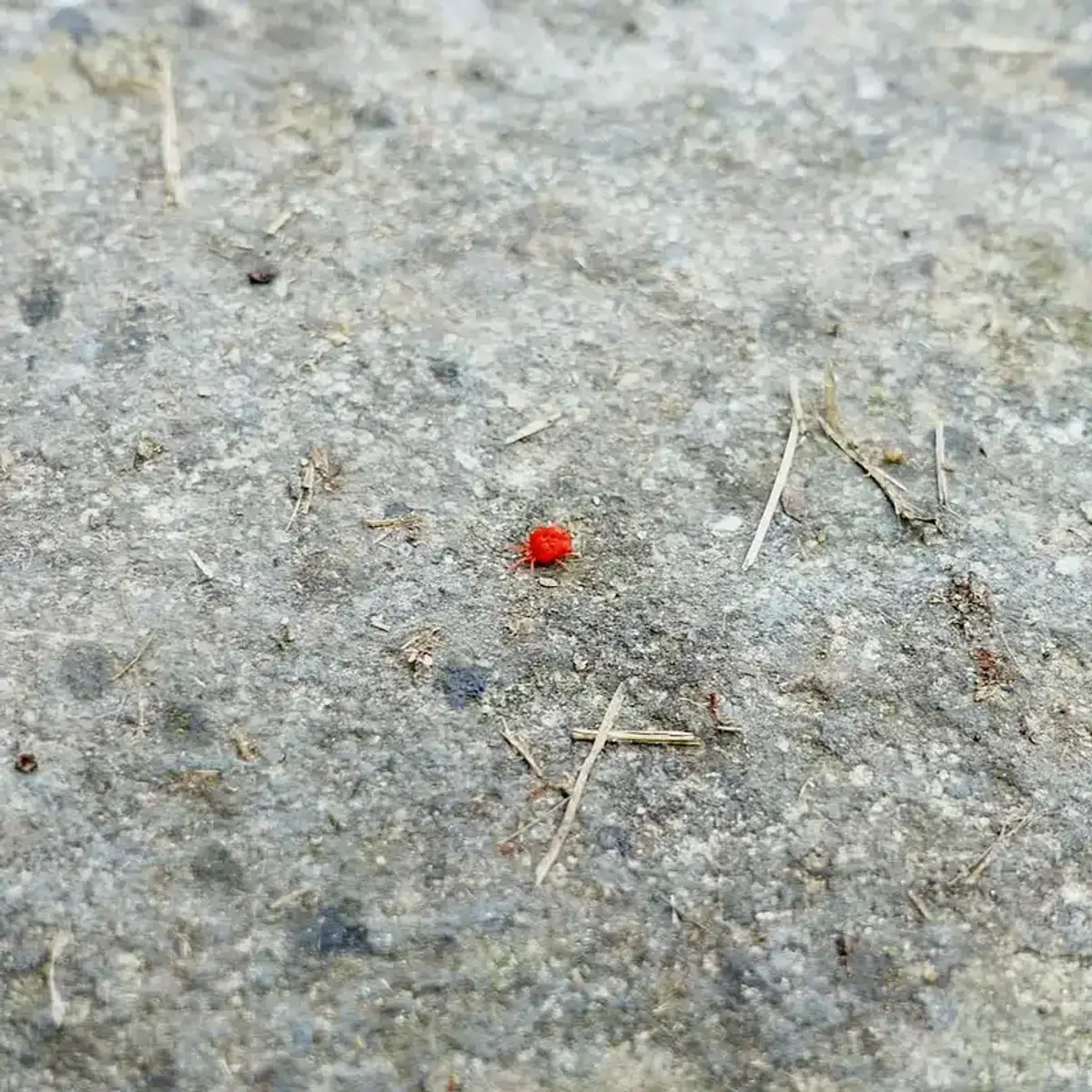
The entire population consists of females that reproduce without mating. Ohio State research shows each adult lays approximately 70 eggs in cracks around mortar, siding, and bark.
In the DC metro area, I’ve noticed clover mites in house problems peak during two specific seasons:
- Spring surge: March through June when soil temperatures rise
- Fall invasion: October through early December before winter dormancy
During summer heat above 85 degrees Fahrenheit, populations naturally decline as eggs enter dormancy. This self-limiting behavior means infestations are temporary, typically lasting just a few weeks.
Why Clover Mites Invade Your House
Clover mites in house invasions happen because these tiny creatures seek out warm surfaces for egg-laying and overwintering. They’re strongly attracted to heat-absorbing south and west-facing walls where sunlight creates ideal microclimates.
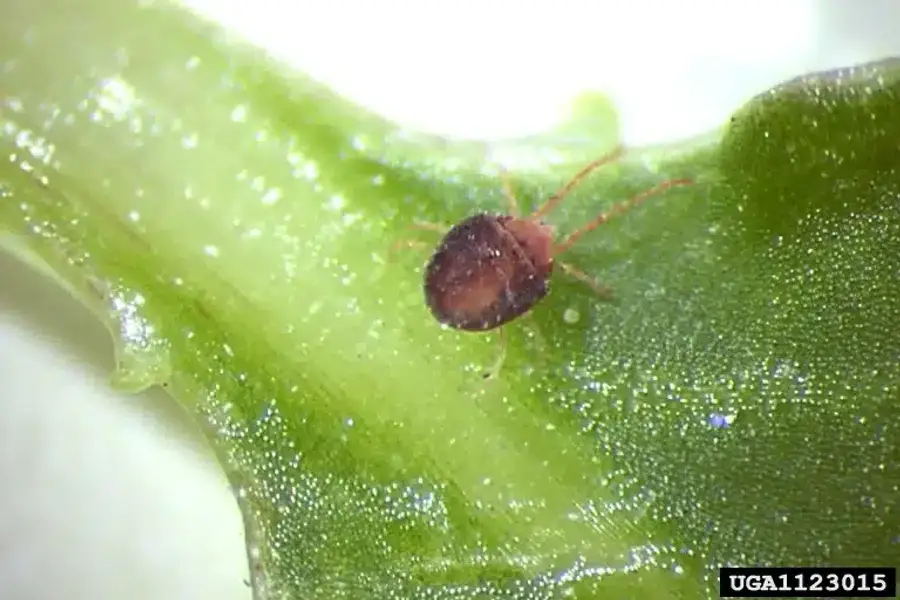
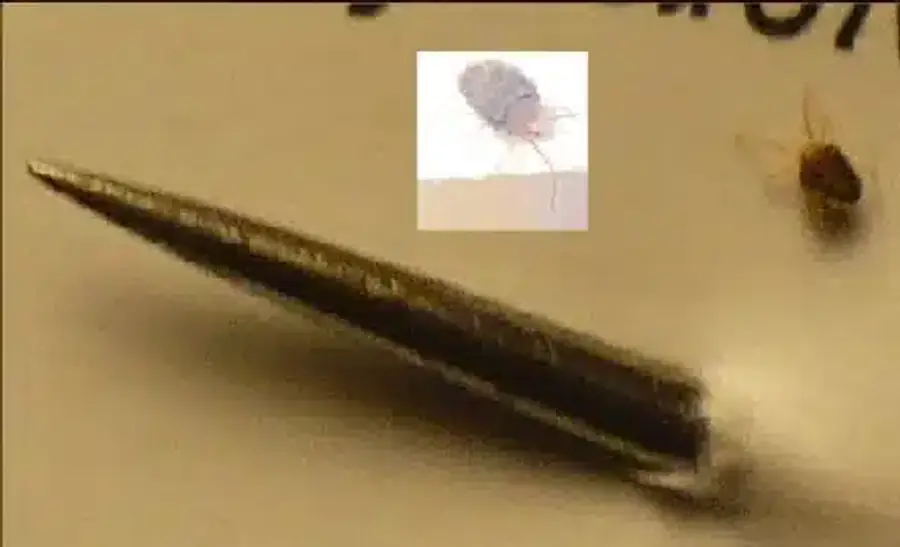
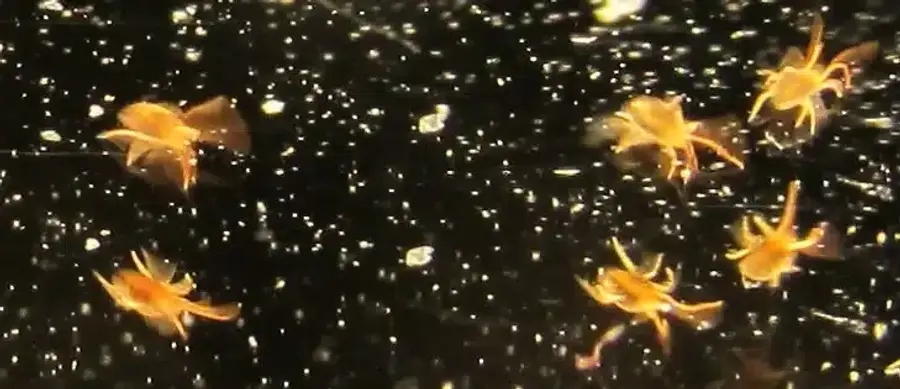

These microscopic invaders exploit incredibly small entry points. According to University of Maryland Extension, clover mites can squeeze through gaps as tiny as 0.15 mm around window casings, door sweeps, and foundation joints. Standard insect screens won’t stop them because the mesh is too coarse.
Once clover mites reach exterior walls, they often mass in large numbers. Customers frequently report seeing them as “moving dark specks” that can climb to upper floors. Although they’re completely harmless plant-feeders, the psychological impact of seeing hundreds of tiny red bugs can be significant.
Basically, clover mites don’t seek out homes intentionally. They’re just following heat gradients that unfortunately lead them to your foundation walls and windows.
Recognizing Clover Mites in House Infestations
Identifying clover mites in house situations requires knowing what signs to look for beyond just seeing the bugs themselves. Most homeowners first notice clusters of tiny red dots moving slowly across white walls, window sills, or around sunny windows.
The telltale red smears appear when clover mites get accidentally crushed during normal household activities. These stains can be particularly frustrating on light-colored fabrics, wallpaper, and painted surfaces.
Because clover mites are plant-feeders, they don’t pose health risks like blood-feeding pests. However, large numbers create a significant nuisance factor that drives many homeowners to seek professional help. Similar to challenges with ants in walls, the sheer volume of invaders can make the problem feel overwhelming.
Especially during peak invasion periods, I’ve seen homeowners discover hundreds of these tiny creatures concentrated around just one sunny window or door frame.
Monitoring and Detection Techniques for Clover Mites in House
Early detection helps prevent minor clover mites in house issues from becoming major invasions. Start monitoring exterior walls during late March and late September when conditions favor mite activity.
Focus inspections on sunny morning hours when clover mites are most active. Check around sill plates, siding overlaps, and roof-wall interfaces on south and west-facing sides of your home.
For outdoor populations, try the shake-sheet test on your lawn. Place a white sheet of paper on grass areas near your foundation and gently tap the turf above it. Clover mites will fall onto the paper and become visible as tiny moving specks.
A small magnifying glass (10-20x magnification) helps confirm identification by revealing the characteristic long front legs. Additionally, look for silver “flecking” damage on grass blades, which indicates active clover mite feeding.
Regular facade inspections during peak seasons can catch problems early, similar to preventive strategies used for termite prevention.
How to Get Rid of Clover Mites in House Without Chemicals
When dealing with clover mites in house situations, non-chemical removal methods work effectively and avoid potential residue issues near windows. Vacuuming provides the most practical solution for immediate removal.
Use a vacuum’s crevice tool to carefully collect clover mites without crushing them. Immediately bag the debris and dispose of it outdoors to prevent escape. This method eliminates live mites while avoiding the red staining that occurs when they’re squashed.
For smaller numbers, try wiping surfaces with a damp sponge using gentle pressure. Some homeowners find masking tape effective for picking up individual mites from walls and window frames.
Temporary exclusion barriers work well around window sills. A thin film of mineral oil or cooking oil creates a sticky trap that catches clover mites before they can spread throughout the room.
Because clover mites don’t reproduce indoors and populations are self-limiting, consistent vacuuming usually resolves clover mites in house problems within a few weeks. This approach mirrors the gentle methods recommended for spider removal in residential settings.
Sealing Techniques to Block Clover Mites in House Entry
Preventing clover mites in house invasions requires sealing incredibly small gaps that most homeowners overlook. Standard weatherproofing won’t stop these microscopic invaders because they can squeeze through openings smaller than 0.15 mm.
Focus your sealing efforts on these critical areas:
- Window and door frame gaps using latex or silicone caulk
- Expansion joints between foundation sections
- Utility penetrations where pipes enter the home
- Mortar cracks in brick or stone veneer
- Areas where siding meets trim pieces
Upgrade weather-stripping around doors and windows with materials specifically designed for tight seals. Replace worn door sweeps that have gaps large enough for clover mites to exploit.
Screen attic and soffit vents with 20-mesh hardware cloth instead of standard screening. Regular insect mesh has openings too large to exclude these tiny arachnids.
This detailed sealing approach requires the same attention to small entry points used in comprehensive ant prevention strategies. The investment in proper exclusion pays dividends by preventing recurring clover mites in house problems.
Landscape and Barrier Treatments to Prevent Clover Mites in House
Creating physical barriers around your foundation significantly reduces clover mites in house invasions. University of Colorado Extension research shows that maintaining an 18-24 inch plant-free strip around foundations dramatically reduces mite migration.
Install coarse mulch or pea gravel barriers, especially on sun-exposed sides of your home. Clover mites rarely cross bare soil or loose materials, making this one of the most effective long-term prevention strategies.
Replace turf immediately adjacent to your foundation with ornamental plants that clover mites avoid:
- Marigolds and zinnias for colorful annual options
- Chrysanthemums and petunias for seasonal displays
- Evergreen shrubs like juniper, spruce, and yew for permanent landscaping
Proper lawn care also reduces mite populations in surrounding areas. Keep grass mowed to recommended heights and avoid heavy spring nitrogen applications that create the succulent growth clover mites prefer.
Target irrigation to drought-stressed “hot spots” near your foundation where stressed grass attracts higher mite concentrations. Additionally, this integrated landscape approach provides multiple benefits beyond pest control, similar to comprehensive strategies used for managing millipedes and centipedes.
Professional Treatment Options for Clover Mites in House
When clover mites in house problems persist despite exclusion efforts, licensed technician applications provide effective control. In my experience, most clover mite issues can be resolved with 1-2 targeted services using non-repellent products.
Exterior perimeter treatments focus on foundation walls up to the first-floor sill plus a 10-20 foot lawn band. We typically use products like Essentria, which provide effective control while meeting our strict internal standards for residential applications.
Timing proves critical for treatment effectiveness. Spring applications should target the March-June surge, while fall treatments work best during the October-December invasion window. University of Minnesota Extension notes that treatments may require reapplication after heavy rainfall.
For interior spaces, we focus on non-chemical methods rather than indoor insecticide applications. This approach aligns with extension recommendations that discourage routine interior pesticide use for cosmetic pest issues.
Professional treatments work best when combined with the sealing and landscape modifications discussed earlier. This integrated approach mirrors successful strategies used for comprehensive clover mite pest control programs that address root causes rather than just symptoms.
Better Termite and Pest Control’s Clover Mite Services
At Better Termite and Pest Control, we’ve developed field-tested approaches for clover mites in house problems based on 57 years of local experience. Our licensed technicians typically resolve infestations with 1-2 targeted services using products that have passed through our internal research team.
Our TriGuard program includes clover mite coverage as part of comprehensive tri-annual pest protection (three times per year). This proactive approach prevents small populations from becoming major invasions by maintaining exterior barriers during peak activity periods.
We provide free unlimited callbacks between scheduled services, ensuring that you get results without additional charges. If clover mites break through our treatments, we’ll return to retreat the problem at no cost until populations are controlled.
Our family-operated business uses the same products in our own homes that we recommend for customers. Each treatment includes detailed documentation so you know exactly what products were applied and where they were used.
Most importantly, we don’t lock customers into binding contracts. If you’re not satisfied with our clover mite control services, you can cancel anytime with 30 days notice.
Getting control of clover mites in house invasions doesn’t have to be overwhelming. With the right identification, removal techniques, and prevention strategies, you can protect your home from these tiny red invaders. Whether you choose DIY methods or professional treatment, addressing the problem early prevents minor issues from becoming major infestations.
For expert help with clover mite problems in the DC metro area, call us at 703-683-2000 or email info@bettertermite.com. Our licensed technicians can provide detailed quotes and treatment plans based on your specific situation.
Frequently Asked Questions About Clover Mites in House
How can I tell if I have clover mites versus other tiny red bugs in my house?
+
Clover mites have several distinctive characteristics that help with identification. They're extremely small (about 1/30th of an inch), reddish-brown in color, and leave red stains when crushed. Most importantly, clover mites have front legs that are twice as long as their other legs and extend forward like antennae. Additionally, they move very slowly and don't bite humans, unlike chiggers which are often confused with clover mites.
Do clover mites bite people or cause health problems?
+
Clover mites are completely harmless to humans and pets. They're plant-feeders that only consume grass and other vegetation outdoors. They don't bite, sting, or transmit diseases. The main issue with **clover mites in house** situations is the nuisance factor and red staining when they're accidentally crushed, not any health concerns.
What's the best way to vacuum clover mites without creating red stains?
+
Use your vacuum's crevice tool attachment to gently collect clover mites without applying pressure that would crush them. Work slowly and avoid pushing down hard on surfaces where they're crawling. Immediately bag the vacuum contents and dispose of them outdoors to prevent escaped mites from returning. If you see any stains starting to form, switch to wiping with a damp sponge instead of continuing to vacuum.
How small are the cracks I need to seal to keep clover mites out?
+
Clover mites can squeeze through gaps as small as 0.15 mm, which is incredibly tiny, much smaller than most homeowners realize. Focus on sealing around window frames, door casings, foundation expansion joints, and any utility penetrations with high-quality silicone or latex caulk. Regular weatherproofing may not be thorough enough because these gaps are often invisible to the naked eye but still large enough for clover mites to exploit.
Will creating a gravel strip around my foundation really prevent clover mites?
+
Research shows that 18-24 inch plant-free barriers of coarse mulch or pea gravel significantly reduce clover mite migration toward foundations. Clover mites rarely cross bare soil or loose materials, making this one of the most effective long-term prevention strategies. The barrier should be widest on south and west-facing sides where clover mites are most attracted to warm surfaces.
When should I consider professional treatment for clover mites in my house?
+
Consider professional treatment when **clover mites in house** problems persist despite sealing efforts and non-chemical removal, or when infestations are too large to manage with vacuuming alone. Licensed technicians can apply exterior perimeter treatments that create effective barriers without indoor pesticide use. Most clover mite problems resolve with 1-2 targeted professional services when properly timed during peak activity periods.
How long will a clover mite infestation last if I don't treat it?
+
**Clover mites in house** infestations are naturally self-limiting and typically last just a few weeks. Populations automatically decline when summer temperatures exceed 85 degrees Fahrenheit or when winter dormancy begins. However, without addressing entry points and nearby population sources, you're likely to experience recurring invasions during each spring and fall peak activity period.
Should I try to handle clover mites myself or call a pest control professional?
+
DIY methods work well for small **clover mites in house** problems, especially when combined with sealing and landscape modifications. Vacuuming and exclusion techniques can effectively manage minor invasions. However, large infestations, recurring problems, or situations where sealing proves difficult may benefit from professional treatment. Licensed technicians have access to specialized products and can identify entry points that homeowners often miss.
With five years of hands-on experience in the pest control industry, George Schulz is a registered technician with the Virginia Pest Management Association and a proud third-generation professional in a family business that's been protecting homes for over 57 years. He manages and trains a team of service pros while also leading internal research efforts—recently spearheading a deep-dive review of thousands of documents on pest control materials to hand-pick the most kid and pet friendly, most effective solutions tailored specifically for homes in the DC metro area.
